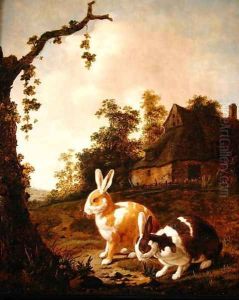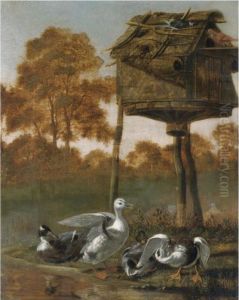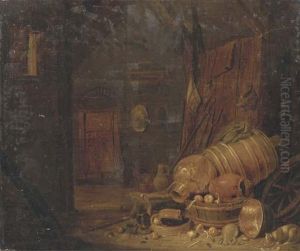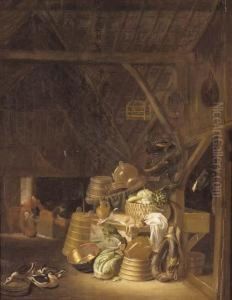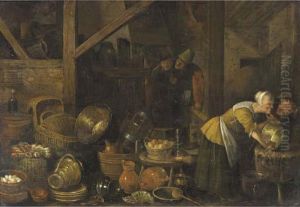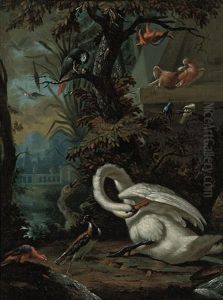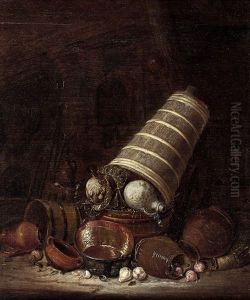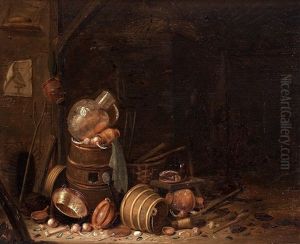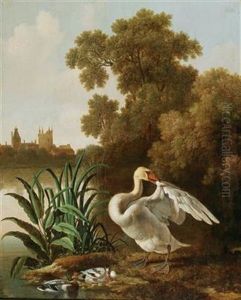Dirck Wyntrack Paintings
Dirck Wyntrack, also known as Dirck Wyntrackt, is a somewhat obscure figure in art history, and little is known about his life. Not much is documented about his birth date or his early life. He was a Dutch painter who was active in the 17th century, a period known as the Dutch Golden Age, which is renowned for its incredible flourishing of the arts.
Wyntrack's work primarily involved still life compositions. He specialized in painting 'banketjes' or 'banquet pieces,' which are still lifes that depict tables set with food, often displaying an abundance of fruit, bread, wine, and other delicacies. These works were known for their detail and the skill with which the artists rendered the textures and surfaces of the objects portrayed.
Despite the scarcity of information regarding his personal life or training, it is believed that Dirck Wyntrack was active in the art scene somewhere between the 1640s and the 1680s. His style suggests that he was influenced by other Dutch still life painters of his time, such as Pieter Claesz and Willem Claeszoon Heda, known for their 'ontbijtjes' or breakfast pieces.
Unfortunately, because Dirck Wyntrack did not achieve the same level of fame as some of his contemporaries, his works are not as well-documented, and his name is not as readily recognized in the canon of Dutch painters. However, those pieces that are attributed to him demonstrate a high level of craftsmanship and provide insight into the still life genre of his era.
Dirck Wyntrack's death is recorded as being in the year 1689. The exact circumstances of his death, much like his life, remain largely unknown. His surviving works continue to be of interest to art historians and collectors who specialize in Dutch Golden Age paintings.
